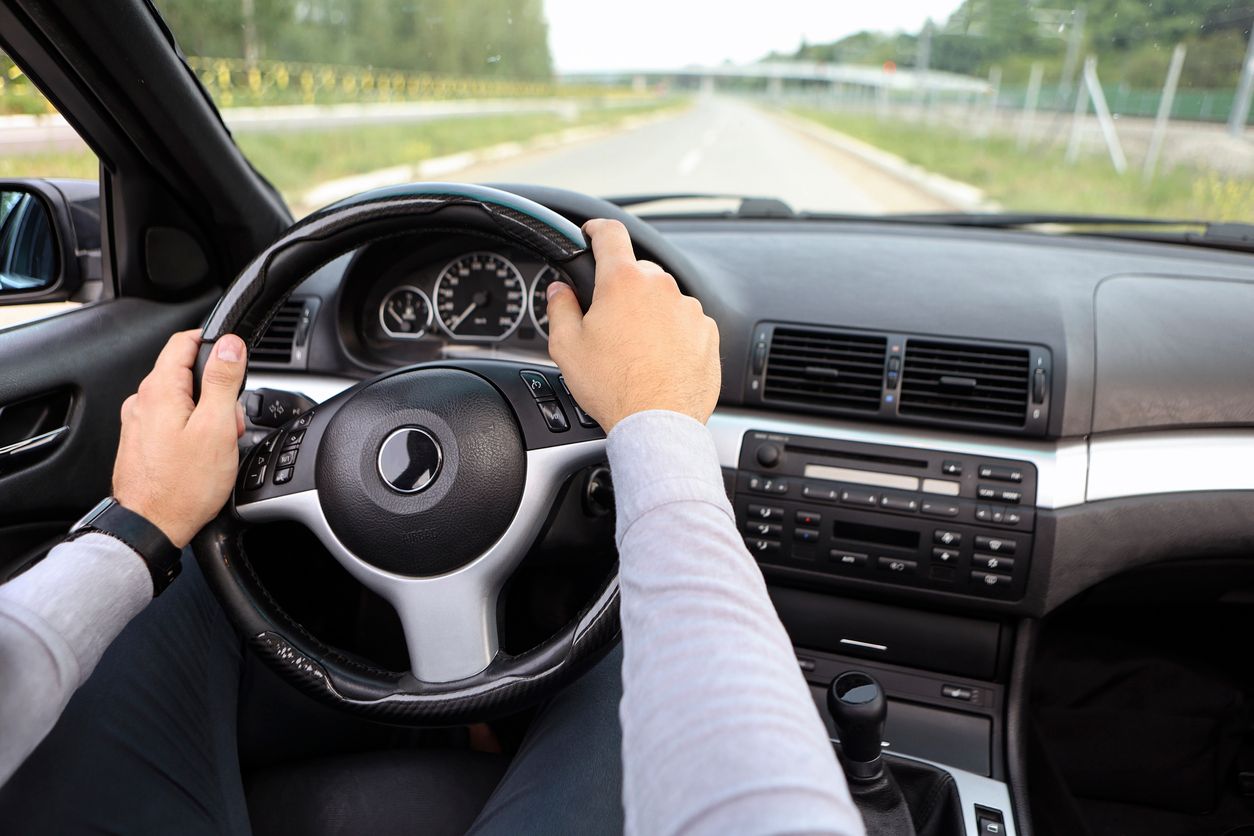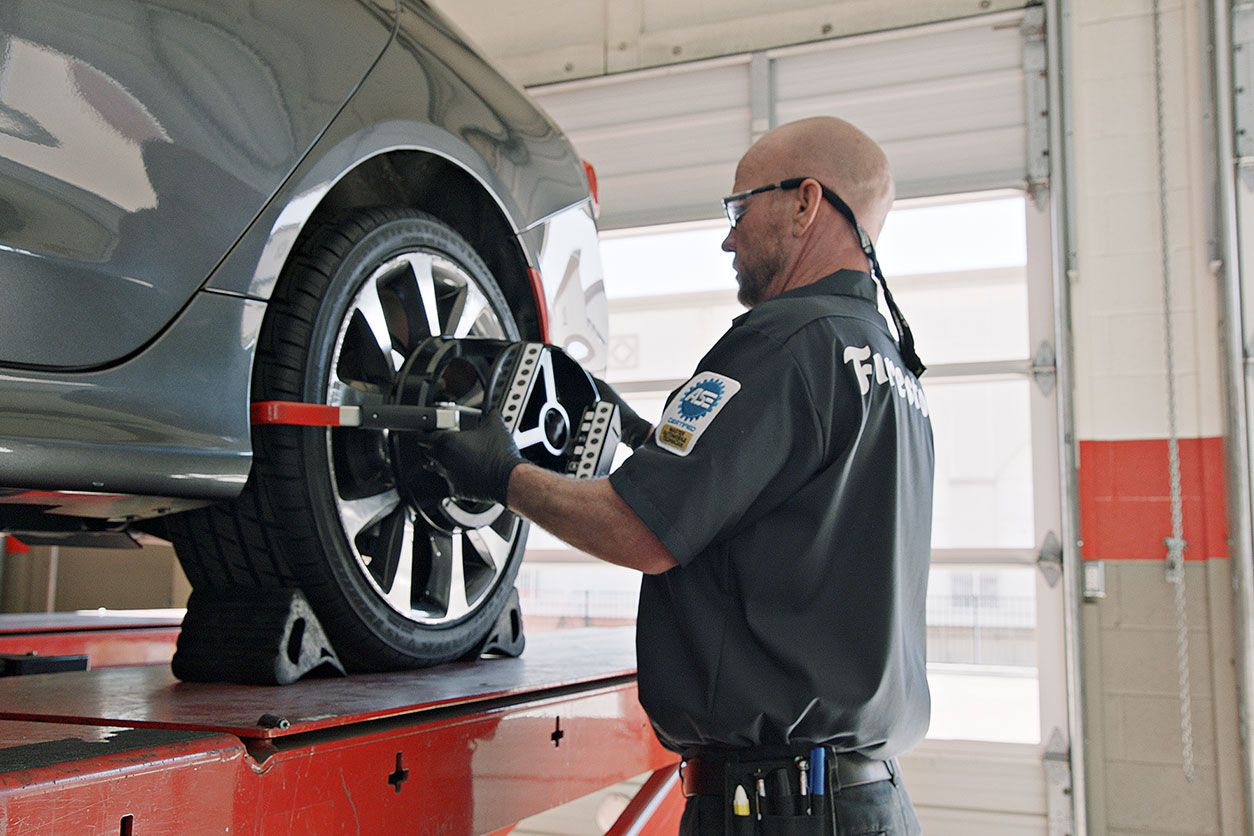A misaligned steering wheel might seem like a minor inconvenience, but it can have significant consequences on both your driving experience and the overall health of your car. If you suspect that your steering wheel is misaligned, it's essential to address the issue promptly. Read on to learn why steering wheel alignment is essential, what can cause it to become crooked, and more.
Why Your Steering Wheel Needs a Proper Alignment
Steering wheel alignment plays a vital role in maintaining control and stability while driving. A correctly positioned steering wheel indicates that your wheels are pointing in the right direction. This allows for smooth and predictable handling. However, driving with a misaligned steering wheel can lead to various issues, including:
- Uneven Tire Wear: Misalignment can put extra stress on your tires, causing them to wear unevenly. This not only reduces the lifespan of your tires but also negatively impacts your vehicle's performance.
- Handling Issues: A misaligned steering wheel can lead to car pull on one side, making it harder to maintain a straight line.
- Reduced Fuel Efficiency: Misalignment increases rolling resistance, forcing your engine to work harder and consume more fuel. Over time, this can lead to decreased fuel efficiency and higher costs at the pump.
- Safety Concerns: Your vehicle may use the direction of the steering wheel as part of its internal calculations for traction control and some ADAS systems. If the steering wheel is not properly aligned, these safety systems may not be able to perform their jobs properly.
So, is it safe to drive with a crooked steering wheel in most vehicles? — No. While you can drive with an off-centered steering wheel, the cons far outweigh the pros. We strongly recommend bringing your vehicle to your local Firestone Complete Auto Care center for wheel alignment services if your steering wheel is misaligned.
Common Causes of a Misaligned Steering Wheel
It doesn't always take much to get your vehicle out of alignment. Your steering wheel could become crooked after hitting a curb or a pothole. Worn parts or tires might lead to a misaligned steering wheel, and driving over poorly maintained roads could require more frequent suspension system checks. In effect, it's often recommended to have your overall alignment checked as a part of your vehicle's ongoing maintenance.
1. Worn or Damaged Suspension System Parts
Damaged steering and suspension system parts can potentially cause misalignment, and the damage isn't always obvious. Minor bending of tie rods, struts, and other critical components can cause significant misalignment by changing the toe and camber angles. Hitting potholes and curbs is often the primary culprit behind suspension parts damage.
Steering and suspension system components can also wear out over time and require replacement, especially if they've suffered impact damage. Bad road conditions can contribute to wear and tear, so if you frequently drive over poorly maintained roads, you may need to check your vehicle's alignment more often.
Worn or damaged suspension components can cause damage to other parts, too. As a result, various components can become overloaded, fail prematurely, or intensify the misalignment.
2. Worn Tires
While bad wheel alignment can cause uneven tire wear, excessively worn tire(s) on one side of an axle can also contribute to steering wheel misalignment.
It's particularly important to check your wheel alignment when replacing summer and winter tires. Ice and snow make handling rear-wheel drive trucks and similar vehicles more difficult. Equipping your ride with tires that offer extra traction support, like Firestone Winterforce and Bridgestone Blizzak tires, can provide significantly better grip, traction, and braking on snow and slush. Getting an alignment service when installing winter tires can maximize their effect, giving your vehicle a maximum surface area between the tire and the road.
3. Incorrect Tire Pressure
A severely underinflated tire on one side of an axle can also throw your wheel out of alignment and cause your vehicle to pull to one side. Your tires should always be inflated according to the recommended manufacturer's air pressure specification. You can find this information in your owner's manual or printed on the car's door jamb.
4. Wheel Misalignment
Potholes, rough roads, and even minor collisions can knock your wheels out of alignment. Minor accidents and more severe collisions can compromise the steering and suspension system components, leading to misaligned wheels. Regular wheel alignments are crucial for maintaining proper steering geometry.
Why Is My Steering Wheel Not Straight After Alignment?
If you had your vehicle serviced recently, and find yourself asking how to straighten the steering wheel after an alignment, a few factors could be at play. After all, you've just had your wheels aligned and are expecting that perfectly centered steering wheel. Before you worry, here are a few reasons why a steering wheel may not be straight after an alignment and what you can do about it.
1. Suspension Wear or Damage
Will an alignment fix a crooked steering wheel? — Not always. A proper alignment can only be accomplished if the steering and suspension systems are working properly. If there are existing problems with the steering or suspension system, performing an alignment is, at best, a temporary alignment. Even after a meticulous wheel alignment, if there's existing wear or damage to suspension components like bushings or control arms, it can soon throw off the alignment. These parts play a crucial role in maintaining the proper geometry of your vehicle's steering and suspension systems.
Solution: If your steering or suspension components are worn or damaged, it's essential to address these issues first before expecting a perfectly straight steering wheel and a proper wheel alignment. A thorough inspection by a qualified technician can help you identify and resolve these concerns.
2. Uneven Tire Wear
Alignment alone might not solve the problem if your tires have significant, uneven wear patterns. Uneven tire wear can occur due to various factors, including improper inflation, misalignment before the recent adjustment, or issues with tire rotation.
Solution: Ensure that your tires are in good condition and have even wear. Regular tire maintenance, proper inflation, and timely rotations can contribute to a more accurate steering wheel alignment.
3. Poor Alignment Job
One of the most straightforward reasons for a misaligned steering wheel post-alignment is that the job was not done correctly — especially if the alignment was performed without proper equipment.
Solution: If you suspect a bad alignment job or something is wrong with your suspension system, visit Firestone Complete Auto Care. Our expert technicians can help diagnose and fix the problem for you.
Can I Do a Wheel Alignment Myself
While some car owners like to DIY repairs on their vehicles, leaving this particular task to a professional technician is highly recommended. In an attempt to fix minor alignment issues at home, some car owners may unintentionally make things worse. Adjusting components without proper knowledge or using improper tools can lead to a steering wheel that refuses to align.
Wheel alignments, including steering wheel alignments, require highly specialized equipment and technical training. Fortunately, Firestone Complete Auto Care centers are equipped with sophisticated, high-end computerized equipment and highly experienced, professional technicians. We can help complete your wheel alignment the right way.
In short, leave alignment adjustments to the professionals. If you've attempted DIY fixes and noticed a persistent problem, consult Firestone to rectify any errors.
Trust Firestone For Expert Wheel Alignment
Don't underestimate the importance of a properly aligned steering wheel for your vehicle's health and safety. If you suspect your steering wheel is off-center and need help identifying the root cause, our experts at Firestone Complete Auto Care can help. Not only do we offer standard wheel alignment services for your ride, but we can also service your safety system with a Safety Systems Alignment if needed.


